
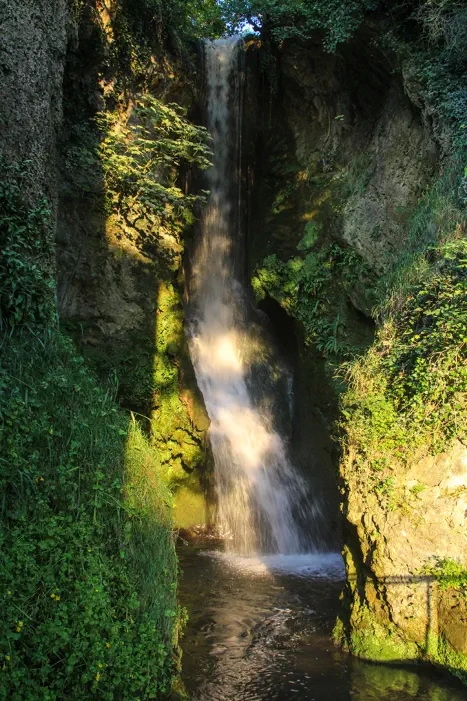
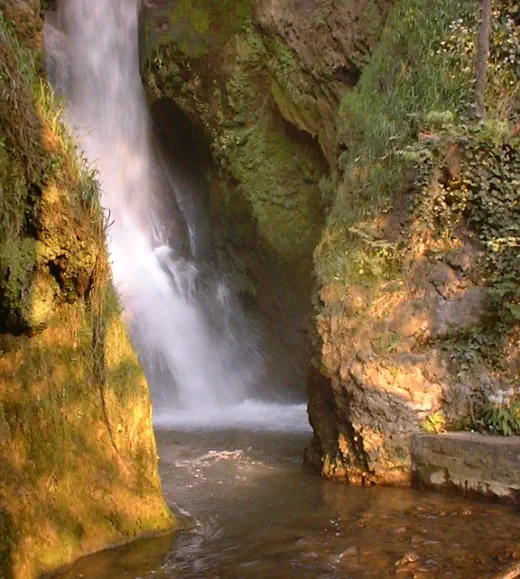
The River Ffyddion rises 4.5 miles to the east of here and is joined a mile
away at Marian Mills by water from a spring called Ffynnon Asa. After
falling some 70 feet over this waterfall the river makes its way westwards
and joins the River Clwyd west of Rhuddlan.
The
Domesday
Book
of
1086
mentions
a
mill
in
the
Dyserth
area,
but
whether it was located at the waterfalls is not known.
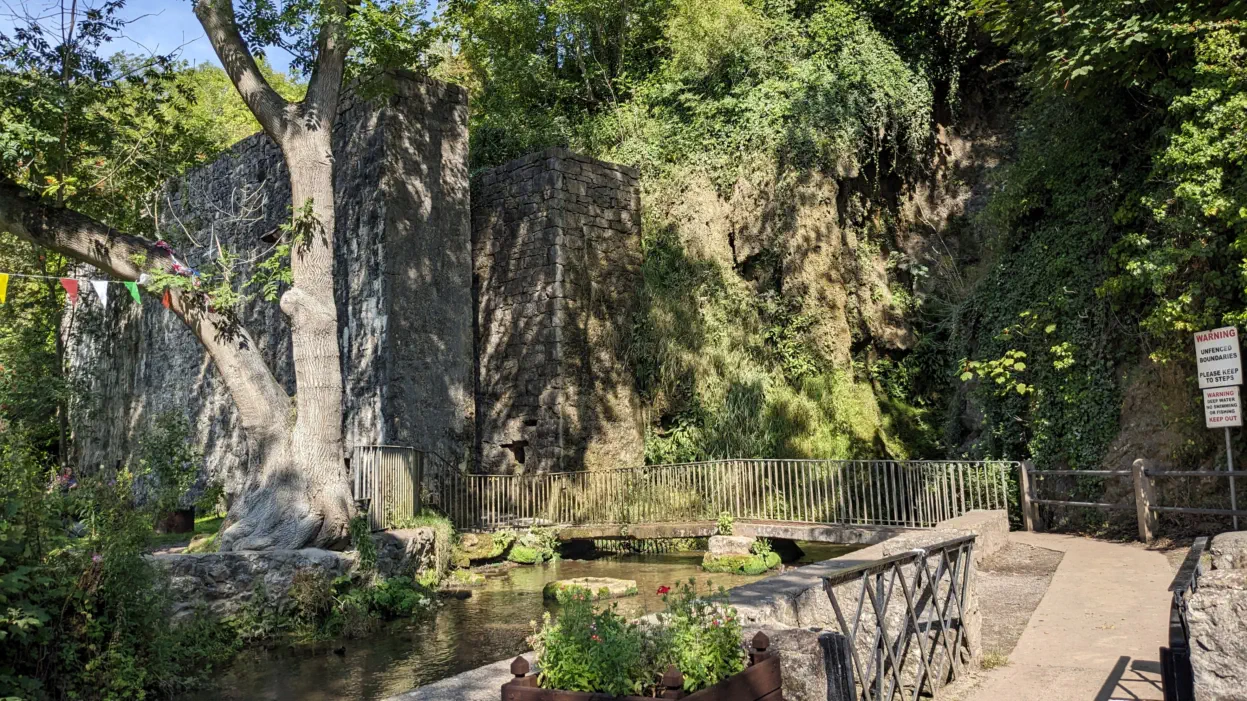
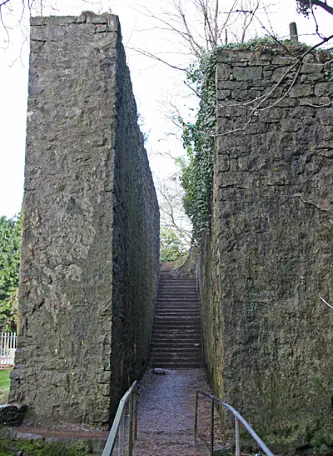
It is probable that the massive pair of walls to the left of the falls were built to support a water
wheel which would have been driven by water diverted from above the waterfall. The walls
could be medieval, but their history is unknown.
The path up the steps between the walls continues over the hill and joins public footpaths to
the upper village and the Dyserth-Prestatyn walkway. It also joins the Dyserth Circular Walk.
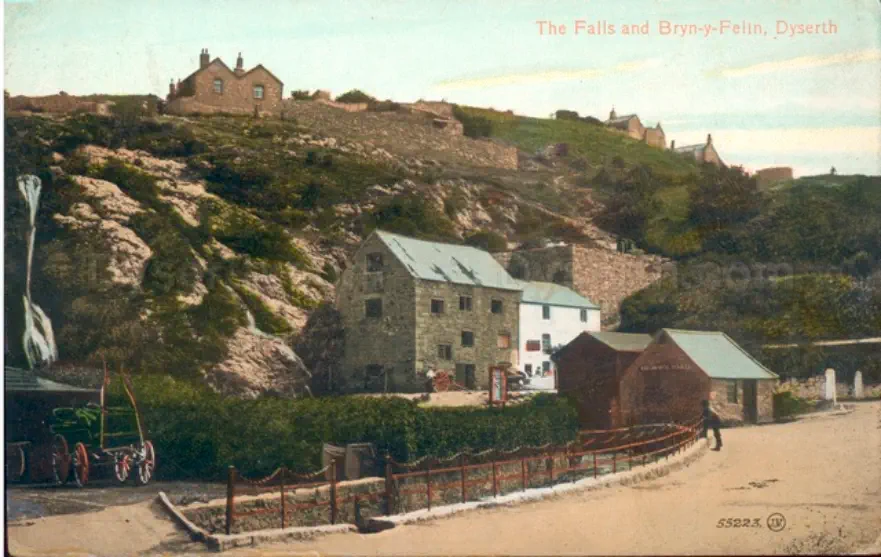
In later years several mills sprang up
along the River Ffyddion, (seven within
the parish of Dyserth) some for flour and
some fulling mills used in cloth-making.
The most recent mill at the falls (shown
right) closed sometime in the 19th century
and was demolished in the 1950s.
The last to survive was the very large Llewerllyd Mill further down stream, which ceased to
operate in the 1960s.
The rise of the Talargoch mines meant more and more water was diverted by leats (one
constructed in the 1750s and another in 1844), to serve the waterwheels and steam engines
of the mines. When Dr Johnson visited Dyserth in 1774 water was diverted temporarily to
allow the waterfall to flow again. He then pronounced it “a very striking cataract”.
And in Thomas Pennant’s “The Journey to Snowdon” published in 1781, he speaks of: “A
water-fall in the deep and rounded hollow of a rock, finely darkened with ivy, once gave
additional beauty to this spot; but of late the diverting of waters to a mill, has robbed the
place of this elegant variation.”
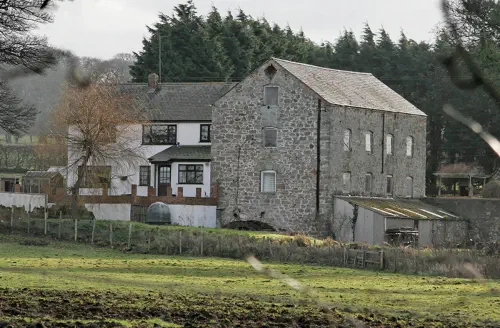
Llewerllyd Mill in 2006
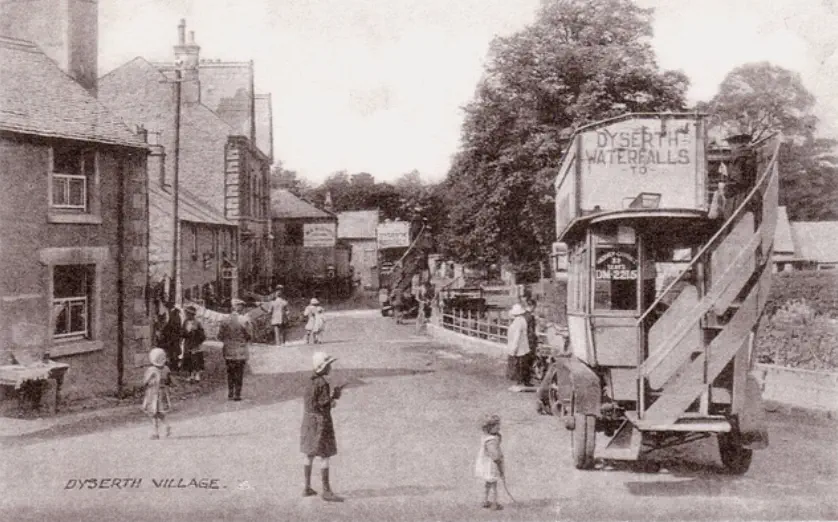
The mines closed in 1884, the waterfall flowed once more and has been a tourist attraction
for over a hundred years.
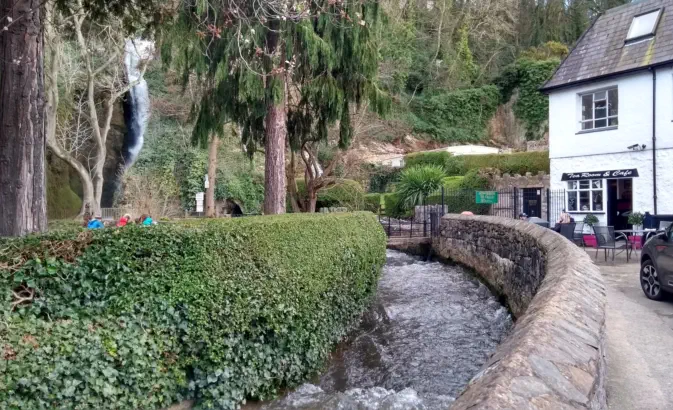
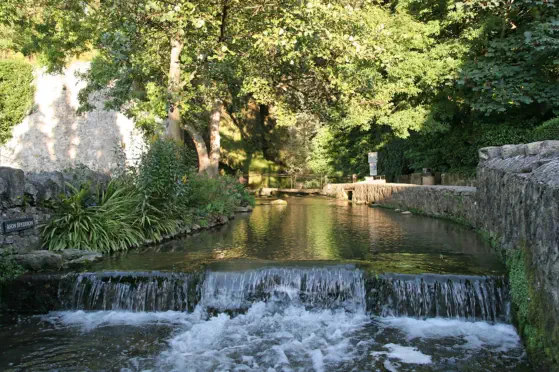
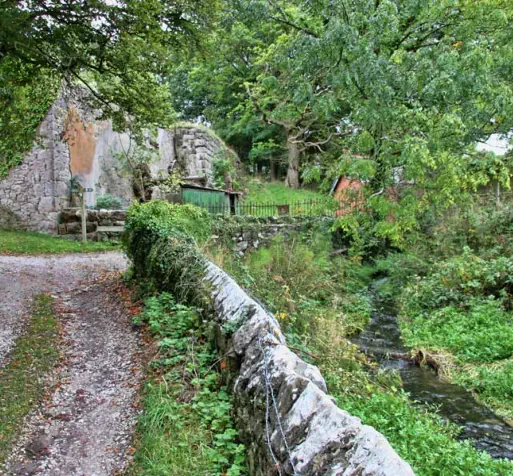
At Marian Mills near Prestatyn Waterworks. This stream is Ffynnon
Asa, just above where it meets the River Ffyddion.

Where the Ffyddion joins the Clwyd, downstream from Rhuddlan.
All photographs (except the two postcard images) Copyright © Peter J Robinson. All rights reserved
Dyserth Waterfall
From time to time the river below
the Waterfall floods part of the lower
village. For some details see the
Floods Page
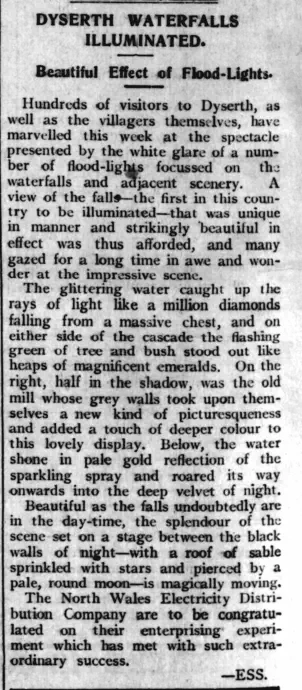
Prestatyn Weekly, 26th September 1931


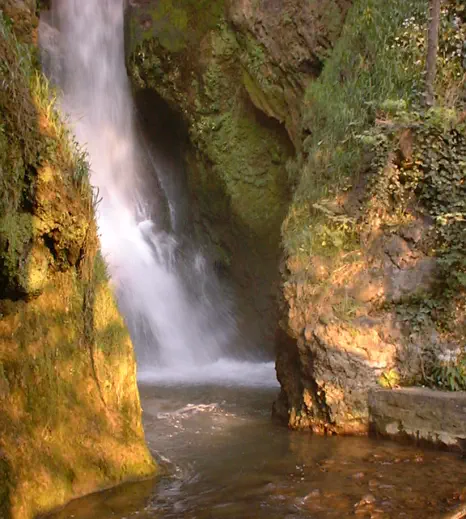
The River Ffyddion rises 4.5 miles to the east of here and is
joined a mile away at Marian Mills by water from a spring
called Ffynnon Asa. After falling some 70 feet over this
waterfall the river makes its way westwards and joins the
River Clwyd west of Rhuddlan.
The
Domesday
Book
of
1086
mentions
a
mill
in
the
Dyserth
area,
but
whether
it
was
located
at
the
waterfalls
is
not
known.
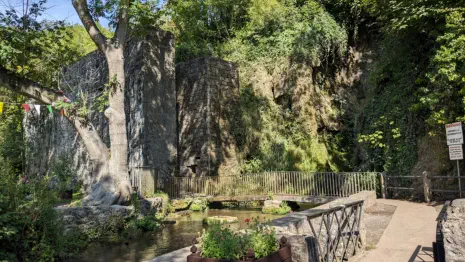

It is probable that the massive pair of walls to the left of the
falls were built to support a water wheel which would have
been driven by water diverted from above the waterfall. The
walls could be medieval, but their history is unknown.
The path up the steps between the walls continues over the
hill and joins public footpaths to the upper village and the
Dyserth-Prestatyn walkway. It also joins the Dyserth Circular
Walk.
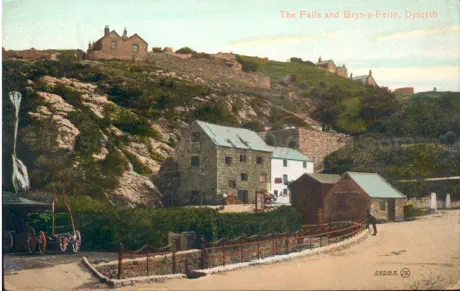
In later years several mills sprang up along the River
Ffyddion, (seven within the parish of Dyserth) some for flour
and some fulling mills used in cloth-making. The most
recent mill at the falls (shown below) closed sometime in
the 19th century and was demolished in the 1950s.
The last to survive was the very large Llewerllyd Mill further
down stream, which ceased to operate in the 1960s.
The rise of the Talargoch mines meant more and more water
was diverted by leats (one constructed in the 1750s and
another in 1844), to serve the waterwheels and steam
engines of the mines. When Dr Johnson visited Dyserth in
1774 water was diverted temporarily to allow the waterfall
to flow again. He then pronounced it “a very striking
cataract”.
And in Thomas Pennant’s “The Journey to Snowdon”
published in 1781, he speaks of: “A water-fall in the deep
and rounded hollow of a rock, finely darkened with ivy, once
gave additional beauty to this spot; but of late the diverting
of waters to a mill, has robbed the place of this elegant
variation.”
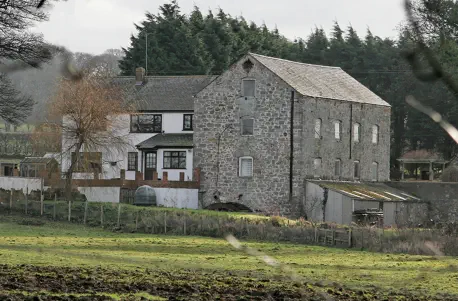
Llewerllyd Mill in 2006
The mines closed in 1884, the waterfall
flowed once more and has been a tourist
attraction for over a hundred years.
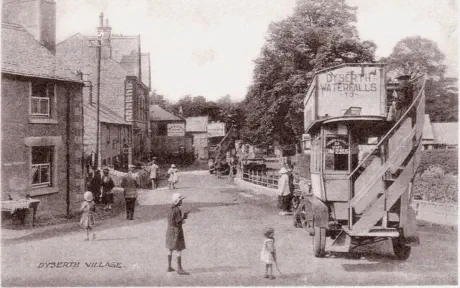

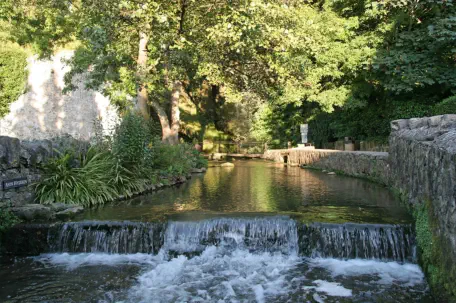

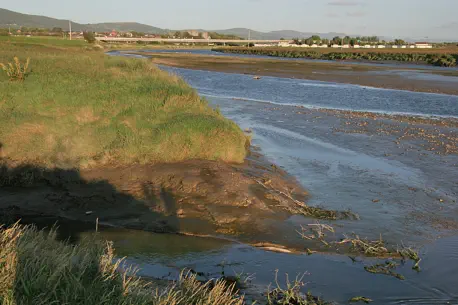
At Marian Mills near Prestatyn Waterworks. This stream is
Ffynnon Asa, just above where it meets the River Ffyddion.
Where the Ffyddion joins the Clwyd, downstream from
Rhuddlan.
Dyseth Waterfall
From time to time the river below
the Waterfall floods part of the lower
village. For some details see the
Floods Page

Prestatyn Weekly, 26th September 1931































































































































